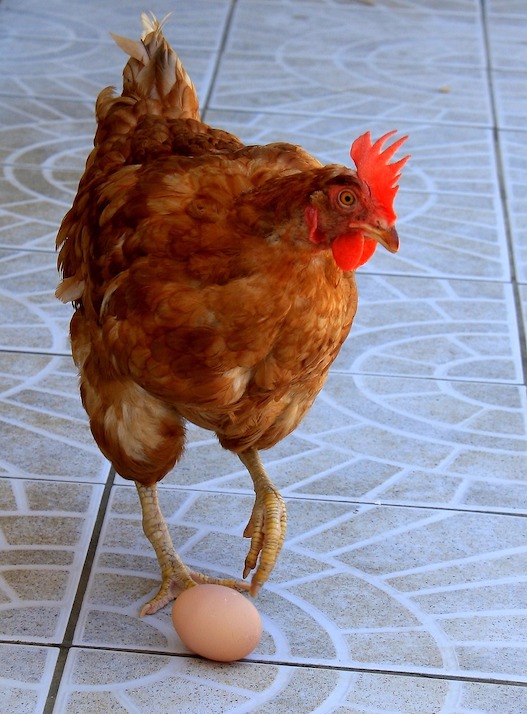Chicken Nesting Boxes – Everything You Need to Know
Chicken Nesting Boxes – Everything You Need to Know
Chicken nesting boxes are essential for any backyard flock. They provide hens with a designated spot to lay their eggs, ensuring your eggs remain clean and unbroken. The right nesting box can also prevent hens from laying in random spots around your yard.
Here's everything you need to know about chicken nesting boxes, from selecting the best type to troubleshooting common problems like yard laying and sleeping in nesting boxes.
Nesting Box Basics
Do Chickens Really Need Nesting Boxes?
Absolutely! Hens require a secure, dark, and private place to lay their eggs. Without adequate nesting boxes, hens might lay their eggs in hidden spots, making them hard to find and risking unwanted chicks if you have a rooster.
Chickens will seek out dark, quiet places like gardens or under buildings. In the absence of suitable nesting boxes, hens might even lay eggs on the coop floor, leading to:
- Contaminated eggs
- Broken eggs
- Encouragement of egg-eating, a difficult habit to break
- Injuries and potential cannibalism from exposed hens being pecked
Providing secure, private nesting boxes is crucial for your hens' well-being.

When to Introduce Nesting Boxes
Hens start practicing laying in nesting boxes about a week before they lay their first egg. It's a good idea to have nesting boxes ready by the time hens are 15 weeks old.
How Many Nesting Boxes Do You Need?
Even though hens might favor one or two boxes, having plenty of nesting boxes helps prevent egg breakages and encourages laying in the designated areas. The rule of thumb is one nesting box per three hens. Always have at least two nesting boxes, even for just two hens, to avoid overcrowding.
Features of an Ideal Chicken Nesting Box
The best nesting boxes should have:
- A Roof: Provides a cozy nest and protects from poop if located near roosts.
- Dim Light and Privacy: Most hens prefer a dark, private place to lay eggs, which also discourages egg eating and vent pecking.
- Soft Nesting Material: Cushions eggs to prevent cracking or breaking.
- A Lip: Keeps eggs and nesting material inside the box.
- Just Enough Room: Should be big enough for one hen, about 12 inches by 12 inches.
- Suitable Access: Steps or a ramp for easy access.
If you have egg-eating chickens or only collect the eggs at the end of the day, consider Roll Away Nesting Box. These nesting boxes have a sloped floor that directs eggs into a separate compartment, keeping them clean and safe until you can collect them.
Some chicken keepers also prefer to be able to collect the eggs from outside of the coop, so choose nesting boxes that open from the outside.
Choosing the Best Nesting Box for Your Coop
All nesting boxes should be secure, cozy, and private. If you can't collect eggs multiple times a day, consider a Roll Away Nesting Box to prevent breakages and egg-eating.
For DIY options, many everyday items can be converted into nesting boxes, such as:
- Pet carriers
- Plastic tubs
- Milk crates
- Cardboard boxes (replace regularly)
- Unused kitty litter trays
- Buckets
- Shelves and drawers
The Best Chicken Nesting Materials
Nesting materials cushion eggs and prevent breakage. While commercial nesting material is ideal for lining, DIY options like pieces of yoga mat or thick layers of newspaper also work well.
Chickens often enjoy making the nest cosy, so most chicken keepers add a soft nesting material on top of the nest liner. Chopped straw or shredded paper work well.
Nesting Box Installation
Location: Nesting boxes should be inside the coop, sheltered from weather, and in a quiet, dim area. Avoid high-traffic spots like near feeders or coop doors. Nesting box curtains can provide added privacy.
Height: Boxes can be placed on the floor but are often preferred slightly raised (12 inches to 3 feet). Raised boxes provide some predator protection and keep eggs cleaner. Even low boxes should have a step or ramp.
Roosts: Ensure roosts are higher than nesting boxes to prevent hens from sleeping in the nesting boxes.
Maintaining Chicken Nesting Boxes
Keep nesting boxes clean and parasite-free to encourage use:
- Remove poop promptly
- Clean thoroughly every week or two
- Disinfect and treat for parasites
- Replace nesting materials regularly
Troubleshooting Common Problems
If you have new hens, new nesting boxes or your hens aren't using the nesting boxes, you can encourage them by keeping them in the coop until the middle of the day for a few days.
Hens Not Using Nesting Boxes:
- Check for parasites, predators, or dirt
- Remove broody hens
- Add privacy curtains
- Move boxes to quieter spots
- Use a fake egg to guide hens
Hens Sharing One Nesting Box:
- Ensure enough boxes are available
- Add fake eggs to unused boxes
Hens Sleeping in Nesting Boxes:
- Ensure roosts are higher and comfortable
- Address bullying or illness
- Close off boxes in the evening if necessary
Dirty or Broken Eggs:
- Keep boxes and coop clean
- Collect eggs regularly
- Provide enough nesting boxes
- Invest in a Roll Away Nesting Box
For more tips or questions, feel free to reach out. Happy chicken keeping!
Rachael at Dine a Chook






